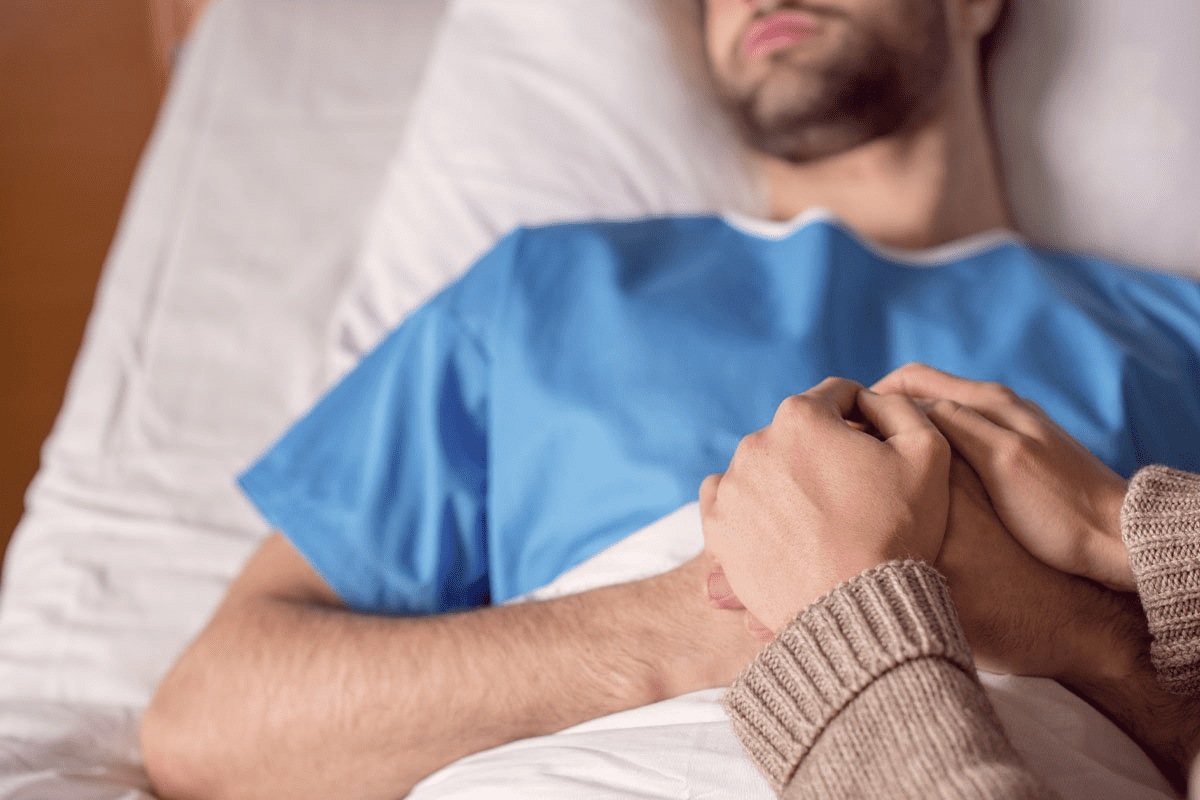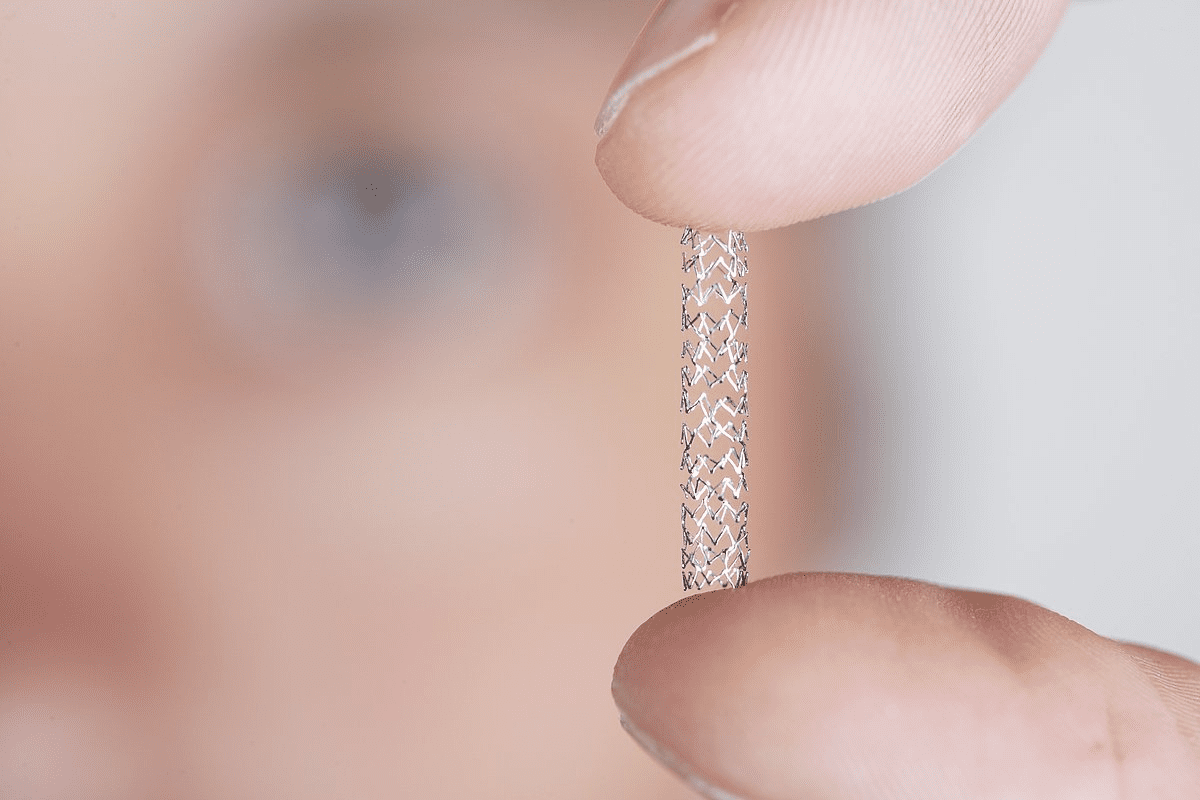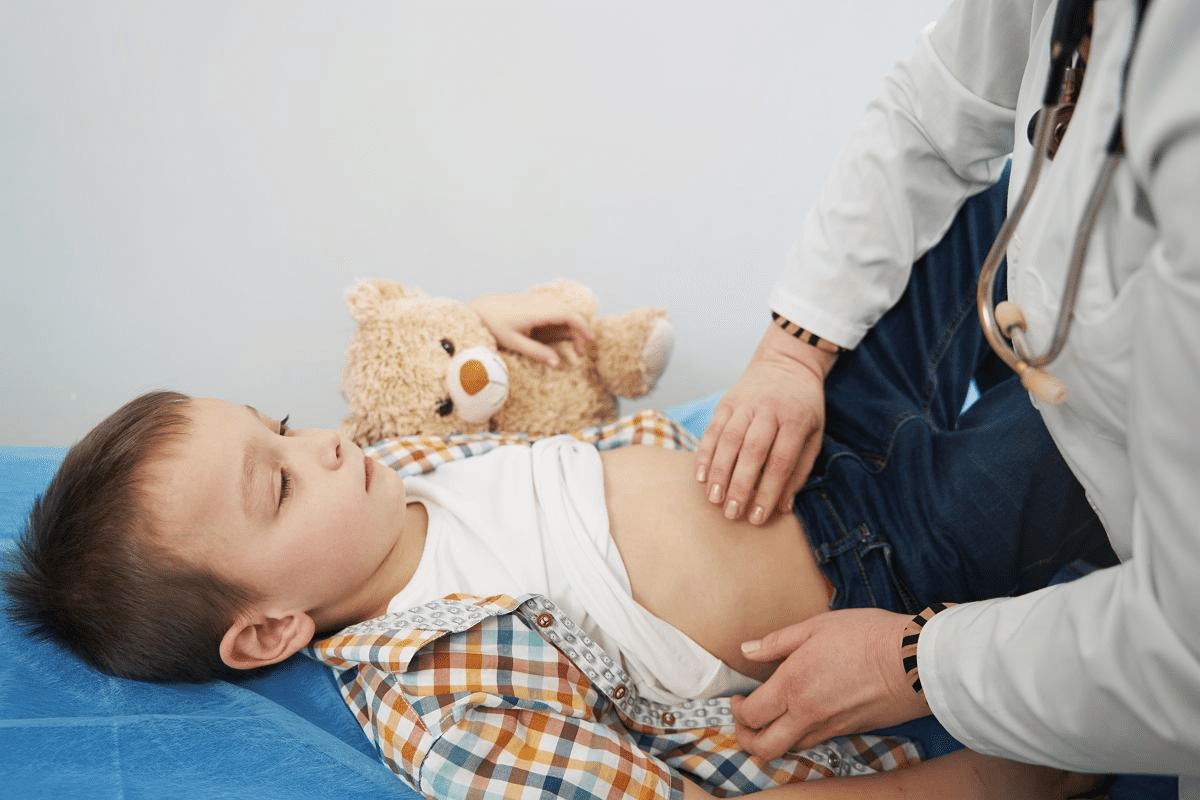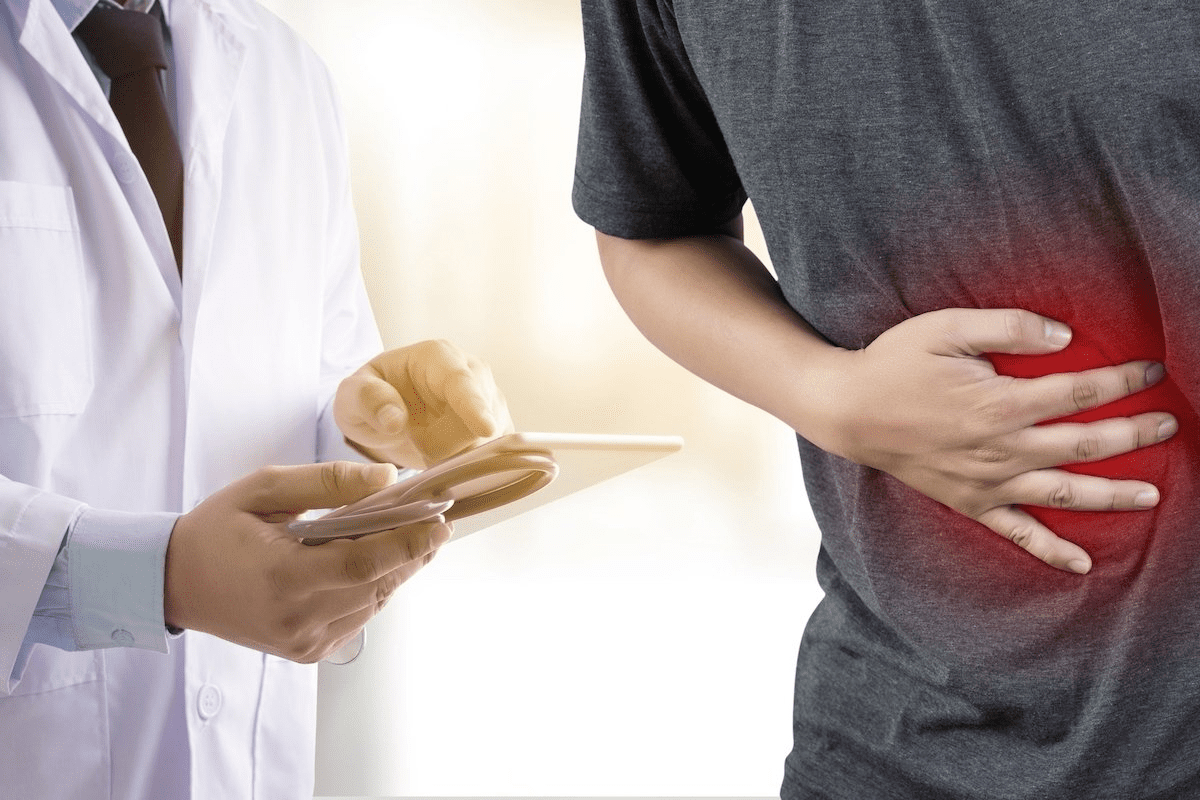Last Updated on November 26, 2025 by Bilal Hasdemir
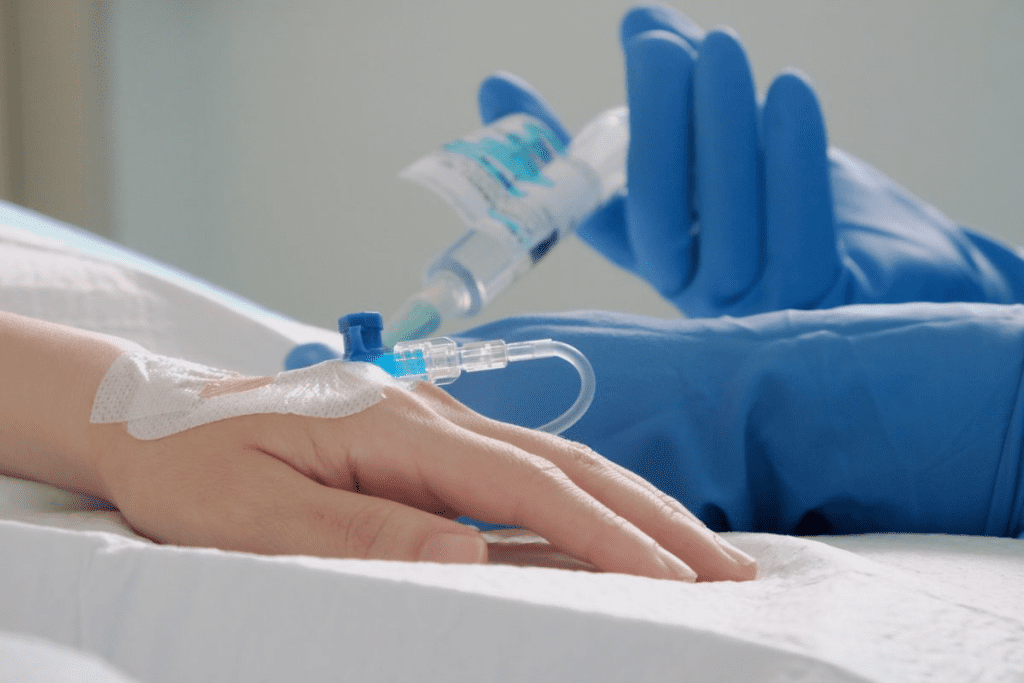
Calorie deficit can worsen chemo side effects. Discover when it hits hardest and how to stay nourished and strong.
Chemotherapy is tough for cancer patients, with effects changing from person to person. Ann Wilson, lead singer of Heart, shared her tough times with chemotherapy. This gives us a glimpse into the harsh side of cancer treatment.
The hardest part of chemotherapy isn’t just the treatment. It’s also dealing with side effects like weight loss and not getting enough nutrients. Nutrition is key during this time. A good diet can lessen some of the treatment’s bad effects.
Knowing when chemotherapy gets the toughest can help patients and their families get ready. We’ll look at how chemotherapy affects people differently. We’ll also see why nutrition is so important during cancer treatment.
Key Takeaways
- Chemotherapy affects patients differently, with varying side effects.
- Nutrition plays a critical role in managing chemotherapy side effects.
- Understanding the impact of chemotherapy can help patients prepare.
- A well-balanced diet is essential during cancer treatment.
- Weight loss is a common challenge during chemotherapy.
Understanding Chemotherapy and Its Effects
To tackle the challenges of chemotherapy, it’s key to understand its effects on the body. Chemotherapy uses strong drugs to kill cancer cells. It can reach cells in other parts of the body, unlike surgery or radiation.
How Chemotherapy Works in the Body
Chemotherapy stops cancer cells from growing and spreading. Chemotherapy drugs target fast-growing cells, like cancer. But, they also affect normal cells, leading to side effects like hair loss and nausea.
Chemotherapy treats many cancers, including lymphoma symptoms, prostate cancer symptoms, and pancreatic cancer symptoms. The treatment depends on the cancer type, stage, and the patient’s health.
Different Types of Chemotherapy Drugs
There are many types of chemotherapy drugs. Each works differently to fight cancer. Some common ones include:
- Alkylating agents, which damage DNA to stop cancer cells from reproducing.
- Antimetabolites, which block DNA and RNA production, stopping cancer cell growth.
- Anthracyclines, a type of antibiotic that damages DNA in cancer cells.
- Plant alkaloids and terpenoids, which disrupt cell division.
Knowing about the different chemotherapy drugs and how they work is important. It helps manage side effects and improve treatment results. Some drugs may cause more severe side effects, like canker sores or digestive issues.
Understanding chemotherapy and its drugs helps patients prepare for treatment. This knowledge also aids in managing side effects and expectations. It makes the treatment process more supportive and effective.
The Timeline of Chemotherapy Side Effects
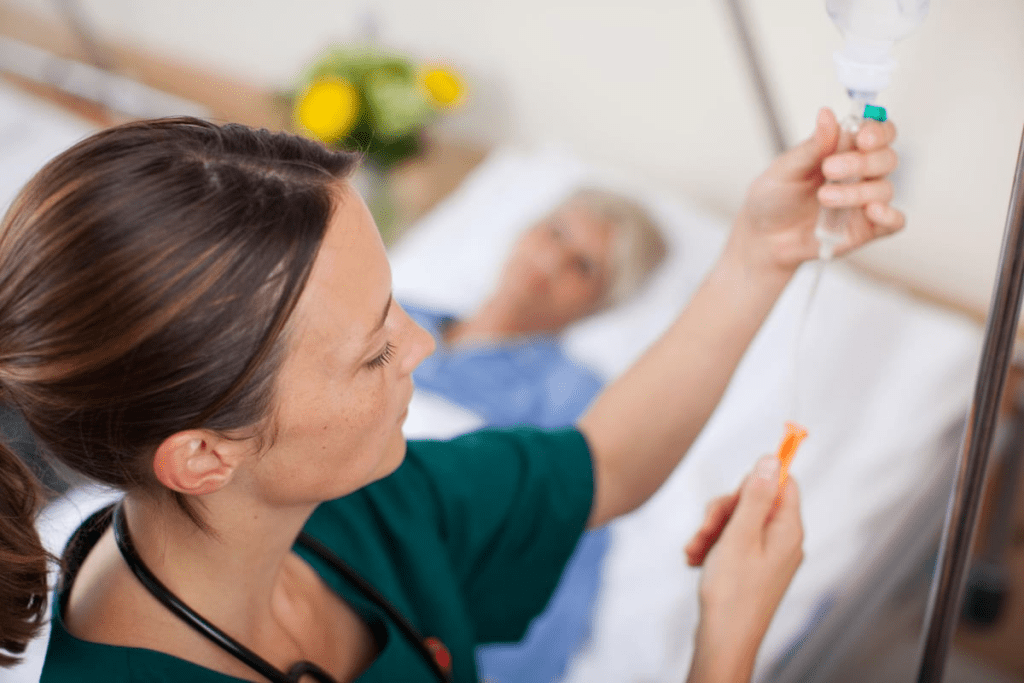
Patients going through chemotherapy can feel better if they know when side effects will happen. This knowledge helps reduce anxiety and makes them feel more ready. Knowing when side effects will occur can help patients like Ann Wilson feel more in control.
Immediate Reactions (0-24 Hours)
The first 24 hours after chemotherapy can bring nausea and vomiting. These are among the most feared side effects. To help, patients are often told to eat foods like bananas, rice, applesauce, and toast. These foods are easy on the stomach.
It’s important to keep eating, even when you don’t feel like it. Drinking electrolyte-rich drinks can help replace lost salts.
Short-Term Side Effects (Days 2-14)
As chemotherapy goes on, side effects like fatigue and hair loss get worse. Fatigue can make everyday tasks hard. Hair loss is common and usually starts within two weeks.
| Side Effect | Typical Onset | Duration |
| Nausea and Vomiting | 0-24 hours | Variable |
| Fatigue | Days 2-7 | Weeks to Months |
| Hair Loss | Days 7-14 | Until recovery |
Long-Term Effects (Weeks to Months)
Some side effects last longer, like fatigue and effects on the immune system. It’s important to eat well, drink plenty of water, and follow your doctor’s advice.
Knowing when side effects will happen helps patients prepare. They can use diet changes and rest to manage their symptoms better.
The Nadir Period: When Blood Counts Drop Lowest
Knowing about the nadir period is key for those getting chemotherapy. It’s the time when blood counts, like neutrophils and lymphocytes, hit their lowest. This drop makes it harder for the body to fight off infections and can lead to other problems.
Understanding Blood Count Cycles
Neutrophils and lymphocytes are important for fighting off infections. During chemotherapy, these counts can change a lot. Neutrophils help fight bacterial infections, and lymphocytes are key for the immune system. When these cells are at their lowest, the body is more open to getting sick.
The timing of blood counts during chemo can differ based on the treatment. Counts usually start to fall a few days after treatment. They hit their lowest (nadir) around 7-14 days later. Knowing this cycle helps manage the risks of chemo.
Typical Timing of Nadir for Different Chemo Regimens
The nadir period’s timing can change based on the chemo drugs and schedule. Some chemo can make counts drop faster, while others do it more slowly.
| Chemotherapy Regimen | Typical Nadir Timing | Infection Risk |
| Regimen 1: Standard Chemotherapy | 7-10 days post-treatment | High |
| Regimen 2: Dose-Dense Chemotherapy | 5-7 days post-treatment | Very High |
| Regimen 3: Maintenance Chemotherapy | 10-14 days post-treatment | Moderate |
Understanding when the nadir period happens for different chemo plans helps doctors care for patients better. By watching blood counts and adjusting treatment, doctors can lower the risk of problems during the nadir period.
Days 7-14: Often the Hardest Phase for Many Patients

Chemotherapy affects people differently, but days 7-14 are usually the toughest. During this time, the side effects of chemotherapy get worse. Patients face big physical and emotional hurdles.
Why This Period Is Particualrly Challenging
Between days 7-14, the body is trying to recover from the first round of chemotherapy. Fatigue is at its worst, making simple tasks hard. Nausea and vomiting, which were bad at first, can keep going or change.
Hair loss starts early but gets more obvious around the second week. This change can be hard for many to get used to.
What to Expect During This Time
Patients might get canker sores and oral thrush because their immune system is down. They might also have swollen lymph nodes as their body fights the treatment.
Eating well is key, and some find probiotics help with stomach problems. Keeping an eye on BMI and nutrition is important to help the body heal.
Knowing what to expect can help patients prepare and get the support they need. Being ready for this tough time can help them focus on getting better.
Cumulative Effects: How Side Effects Build Over Treatment Courses
It’s important to know how chemotherapy side effects grow over time. This is key for those going through many treatment cycles. As treatment goes on, the body’s reaction to chemotherapy can change. This often leads to more side effects.
First Cycle vs. Later Cycles
The first cycle of chemotherapy is the most unpredictable in side effects. The body hasn’t adjusted yet, and the first reaction can be strong. Later cycles bring different challenges as the body has already seen chemotherapy. This can lead to a cumulative effect where side effects get worse or new ones appear.
With each cycle, patients often feel more tired. This cumulative fatigue can really affect daily life. It can make it hard to work, socialize, take care of yourself, and eat well.
When Cumulative Fatigue Peaks
Cumulative fatigue, a common side effect, peaks at different times for everyone. It usually gets worse with more treatment cycles. Keeping an energy balance is key, as is knowing how chemotherapy affects metabolism and can cause weight loss or gain.
To fight fatigue, patients are often told about dieting and creating a calorie deficit for weight loss if needed. They also learn about other lifestyle changes. It’s about finding a balance that suits each person, considering their health, the chemotherapy type, and dosage.
Understanding these dynamics helps patients and their doctors prepare for and handle chemotherapy’s cumulative effects. This improves life quality during and after treatment.
Factors That Influence Severity of Chemotherapy Side Effects
Chemotherapy side effects can differ a lot from person to person. Several key factors play a role in how severe these effects are. Knowing these factors helps both patients and doctors manage and predict treatment challenges.
Type and Dosage of Chemotherapy
The type and dosage of chemotherapy greatly affect side effects. Different drugs have different intensities and side effects. For example, some drugs might cause more nausea or hair loss.
Higher doses of chemotherapy can lead to more severe side effects. Some treatments use a mix of drugs. This can change how severe side effects are. Knowing the specific treatment and its side effects is key for patient care.
Individual Health Factors
Health factors like overall health, BMI, and existing medical conditions affect how chemotherapy is tolerated. For instance, a higher BMI might lead to different side effects than a lower BMI. Conditions like hypothyroidism can also change how the body reacts to chemotherapy, possibly increasing side effects.
Having infections like H. pylori can also affect how well a patient can handle chemotherapy. Patients with infections might need extra treatment before starting chemotherapy to avoid complications.
Previous Treatments and Medical History
A patient’s past treatments and medical history can greatly influence their response to chemotherapy. Those who have had chemotherapy or radiation before might face more severe side effects. Previous surgeries or medical conditions can also impact how the body reacts to chemotherapy.
Tests like PET scans can give important information about a patient’s condition. This helps tailor the chemotherapy to their needs. Stress management, like lymphatic drainage massage, can also help by improving overall well-being.
Cortisol levels, which can be affected by stress, play a role in how the body responds to chemotherapy. High cortisol levels can weaken the immune system, which might make side effects worse.
In conclusion, the severity of chemotherapy side effects depends on many factors. These include the type and dosage of chemotherapy, individual health factors, and past medical treatments. Understanding these factors helps healthcare providers create personalized treatment plans. This can help reduce side effects and improve patient outcomes.
Cancer-Specific Chemotherapy Experiences
Chemotherapy experiences differ for each type of cancer. It’s key for patients to know what to expect. We’ll look at how different cancers affect treatment timelines, side effects, and the patient’s journey.
Breast Cancer Chemotherapy Timelines
Chemotherapy is a big part of breast cancer treatment. The length and timing depend on the cancer’s stage and type. It also depends on if the patient is getting surgery or radiation too.
Chemotherapy for breast cancer is given in cycles. Each cycle is a few weeks long. The whole treatment can last months, with the hardest times at the start.
Lymphoma and Leukemia Treatment Patterns
Lymphoma and leukemia affect the blood and immune system. Their treatments share some similarities. Chemotherapy for these cancers is often more intense and might need hospital stays.
The cycles are shorter, but treatment can last longer. Lymphoma treatment often includes rituximab, a special antibody therapy. Leukemia treatment might include targeted therapy along with chemotherapy.
Colorectal and Digestive Cancer Chemotherapy Effects
Colorectal and digestive cancers, like stomach cancer, face unique challenges with chemotherapy. Patients may deal with nausea, diarrhea, and mouth sores. Chemotherapy plans are made based on the patient’s health and cancer type.
For some, chemotherapy is used before surgery to shrink tumors. For others, it’s after surgery to kill any cancer left behind.
Ken Sandberg’s story with bladder cancer shows how different chemotherapy can be. His experience shows the need for personalized care and support. Knowing the specific challenges of each cancer helps patients and doctors navigate chemotherapy better.
Physical Side Effects and Their Peak Intensity Periods
Chemotherapy’s physical side effects can be overwhelming. Knowing when they peak helps patients prepare. It’s important to address the physical toll it takes on the body.
Different side effects show up at different times. Knowing these timelines helps patients manage their condition better.
Nausea and Vomiting: Timing and Duration
Nausea and vomiting are common and distressing side effects. They can start within hours of treatment and last for days. The worst usually happens in the first 24 to 48 hours.
To fight nausea and vomiting, patients often follow a BRAT diet (Bananas, Rice, Applesauce, Toast). They also drink electrolyte-rich fluids. Anti-nausea meds are often given to help.
Hair Loss: When It Typically Begins
Hair loss, or alopecia, is a big side effect of chemotherapy. It starts in 2 to 4 weeks. How much hair falls out depends on the treatment.
Knowing hair loss is temporary can comfort patients. Hair usually grows back a few weeks after treatment ends.
Mouth Sores and Digestive Issues: Timeline
Mouth sores, or mucositis, can appear in 1 to 2 weeks. They can be painful and increase infection risk. Digestive issues, like diarrhea or constipation, also happen early in treatment.
Good oral hygiene and topical treatments help mouth sores. For digestive issues, try increasing fiber or eating bland foods.
| Side Effect | Typical Onset | Peak Intensity | Management Strategies |
| Nausea and Vomiting | Within hours of treatment | 24-48 hours post-treatment | BRAT diet, hydration, anti-nausea medications |
| Hair Loss | 2-4 weeks after starting treatment | Varies | Scalp cooling, gentle hair care |
| Mouth Sores | 1-2 weeks after treatment begins | 1-2 weeks | Good oral hygiene, topical treatments |
| Digestive Issues | First few weeks of treatment | Varies | Dietary adjustments, hydration |
Understanding side effects’ timing and management helps patients prepare for chemotherapy’s challenges.
Fatigue: Understanding Its Patterns During Chemotherapy
Fatigue is a big problem for people going through chemotherapy. It affects their body and mind. Knowing how fatigue works during chemotherapy is key to living better.
Acute vs. Chronic Fatigue
There are two kinds of fatigue from chemotherapy: acute and chronic. Acute fatigue happens right after treatment. It’s because of the treatment’s quick effects on the body. Chronic fatigue comes later and lasts longer.
It’s important to know the difference. Acute fatigue might need quick care after treatment. But chronic fatigue needs a long-term plan to manage energy and make lifestyle changes.
When Energy Levels Hit Their Lowest Point
When energy is lowest can vary. It depends on the treatment, health, and cancer type. Usually, it’s between days 7-14 after treatment.
Rest, a balanced diet, and staying hydrated are key during this time. Nutrition is very important for energy. Eating enough calories and keeping metabolism right helps keep energy up.
Understanding and managing fatigue during chemotherapy can help patients. It can make their life better and more enjoyable.
Emotional and Cognitive Impacts of Chemotherapy
Chemotherapy affects more than just the body. It also impacts a patient’s mind and emotions. It’s important to tackle the mental health side of cancer treatment, alongside the physical challenges.
Chemo Brain: Timing and Manifestation
“Chemo brain” refers to the mental fogginess and memory problems some patients face. The timing of when chemo brain starts can vary. It often happens during and after treatment.
Research shows that the type of chemotherapy, dosage, and individual factors can affect chemo brain. Some patients struggle with concentration, memory, and processing information. These issues can be due to the drugs, stress, and fatigue from treatment.
Using cognitive training, memory aids, and stress management can help. These strategies can ease the symptoms of chemo brain.
| Cognitive Symptom | Possible Causes | Management Strategies |
| Memory Issues | Chemotherapy drugs, stress, fatigue | Memory aids, cognitive training |
| Concentration Problems | Chemotherapy, anxiety, depression | Stress management, cognitive behavioral therapy |
| Processing Information | Chemotherapy, cognitive overload | Cognitive training, relaxation techniques |
Emotional Vulnerability During Treatment
Chemotherapy can deeply affect a patient’s emotions, making them feel vulnerable. The stress of a cancer diagnosis and treatment’s physical effects can raise cortisol levels. Patients often feel anxious, depressed, or experience mood swings.
“The emotional toll of chemotherapy should not be underestimated. Patients need support that covers both physical and emotional needs.”
Strategies like lymphatic drainage massage and red light therapy can help with both physical and emotional pain. Recognizing patients’ emotional vulnerability helps healthcare providers offer better care.
Understanding chemotherapy’s emotional and cognitive effects helps us support patients better. We can address their needs more fully during treatment.
Preparing for Your Hardest Days: Practical Strategies
Getting ready for the toughest days of chemotherapy is all about planning, self-care, and support. Having a good plan can really help you deal with the challenges of treatment.
Creating a Side Effect Management Calendar
One key strategy is to make a side effect management calendar. This helps you track your treatment and predict when side effects will hit. You can then plan for medication, rest, and self-care to lessen these effects.
For example, if you’re going to feel nauseous on some days, prepare easy-to-digest meals and keep anti-nausea meds ready. Drinking plenty of water is also key, more so on days when you’re feeling off.
Setting Up Your Home Environment
Your home environment is key to feeling comfortable during chemotherapy. Make a cozy, relaxing space with essentials like water, snacks, and things to do. This can help reduce stress and boost your mood.
Having a support system is also essential. This could be family and friends checking in or hiring help. A strong support network offers both emotional and practical help during tough times.
Planning Work and Social Activities Around Treatment
Chemotherapy can really drain your energy and make daily tasks hard. So, it’s important to schedule work and social plans around your treatment. This might mean talking about flexible work hours or adjusting social plans to avoid burnout.
Remember, your health is the top priority. Be smart about your energy levels and plan wisely. This might mean saying no to some things or rescheduling for better days.
Nutrition and Hydration During Intense Chemotherapy Periods
When you’re going through intense chemotherapy, it’s key to keep up with nutrition and hydration. This helps manage side effects and keeps you healthy. Chemotherapy can make it hard for your body to heal, so eating the right foods and drinking enough water is important.
We suggest eating foods that are full of nutrients but easy to digest when you’re not feeling well. Foods high in fiber can help with digestion. Also, probiotics in foods like yogurt or supplements can help your gut. Drinking lots of water and electrolyte-rich drinks is also vital for keeping your body’s electrolyte balance right.
Foods That Help During the Toughest Days
Some foods can really help when you’re going through tough times with chemotherapy. Foods high in fiber like bananas, applesauce, and oatmeal can help with diarrhea or constipation. Adding probiotics to your diet, through foods like yogurt or kefir, can keep your gut healthy. Some people also find kombucha helpful because of its probiotic benefits.
If you have mouth sores or digestive problems, foods like beef tallow or collagen peptides can help. They can heal your gut lining and give you the nutrients you need. It’s also good to listen to your body and eat small meals often to fight nausea and keep your energy up.
Hydration Strategies When Side Effects Are Severe
It’s very important to stay hydrated during chemotherapy, even more so when you’re dealing with vomiting or diarrhea. We suggest drinking water all day and using electrolyte-rich drinks to replace lost salts. For some, clear broths or electrolyte-rich drinks might be easier to drink than plain water.
Watch your body’s signs of hydration, like the color of your urine. If it’s pale yellow, you’re likely hydrated. Try to avoid caffeinated and sugary drinks, as they can make dehydration worse. By focusing on hydration and nutrition, you can tackle the challenges of chemotherapy and stay healthy.
Mental Health Support Through the Chemotherapy Journey
Chemotherapy is more than just treatment; it needs a full support system for mental health. Patients face many emotional challenges during treatment. These can affect their overall well-being.
Recognizing Depression and Anxiety Triggers During Treatment
It’s key to spot signs of depression and anxiety linked to chemotherapy. Changes in cortisol levels can lead to sadness, hopelessness, or anxiety. Knowing these triggers helps patients seek the right support.
Common symptoms include:
- Persistent feelings of sadness or hopelessness
- Increased anxiety or fear about the future
- Changes in appetite or sleep patterns
- Difficulty concentrating or making decisions
Professional and Peer Support Resources
There are many resources to help with chemotherapy’s mental health challenges. Professional counseling offers a safe space for emotional talks. Support groups provide a community feeling and connection with others.
| Support Resource | Description | Benefits |
| Professional Counseling | One-on-one therapy sessions with a licensed therapist | Personalized support, coping strategies, emotional guidance |
| Support Groups | Group meetings with others undergoing chemotherapy | Community connection, shared experiences, emotional support |
| Lymphatic Drainage Massage | A gentle massage technique to promote relaxation and reduce stress | Reduced anxiety, improved mood, enhanced well-being |
| Red Light Therapy | A non-invasive treatment using red light to promote healing and relaxation | Reduced stress, improved mood, enhanced recovery |
Staying informed about treatment through pet scans can also help. It makes patients feel more in control, reducing anxiety.
When to Contact Your Healthcare Team
When you’re going through chemotherapy, it’s key to know when to get help fast. Chemotherapy can cause side effects that need quick attention from your healthcare team.
Red Flags That Require Immediate Medical Attention
Some symptoms during chemotherapy are red flags that mean you should call your healthcare provider right away. These include:
- Fever: A temperature over 100.4 °F (38 °C) might mean you have an infection.
- Bleeding or Bruising: If you see blood in stool or urine, or if you’re bleeding or bruising a lot, get help fast.
- Severe Pain: If your pain isn’t getting better with your medicine, it’s a sign to seek help.
- Shortness of Breath: If you’re having trouble breathing or feel like you can’t catch your breath, call for help.
Distinguishing Between Expected and Concerning Symptoms
Some side effects from chemotherapy are normal, but others might be a sign of a bigger problem. It’s important to know the difference.
| Symptom | Expected | Concerning |
| Fever | Low-grade fever that goes away quickly | High fever (above 100.4 °F) or fever that lasts |
| Blood Counts | Temporary drop in neutrophils and lymphocytes | Big drop in blood counts that lasts, raising infection risk |
| Pain | Mild to moderate pain that medicine can handle | Pain that’s very bad and medicine can’t fix |
Also, don’t forget to keep up with your health checks, like a pap smear, as your healthcare provider tells you to. If you notice anything strange or have worries about your treatment, call your healthcare team.
Conclusion: Navigating Through Your Chemotherapy Journey
Chemotherapy is a tough and complex process. Ann Wilson’s story shows how strong the human spirit can be. Knowing what to expect and managing side effects is key.
Eating right and staying hydrated is important. Chemotherapy can cause weight loss. Keeping your energy up helps your body and mind stay strong.
Understanding when side effects hit hardest helps. Having support and staying in touch with your doctors is vital. This way, you can face challenges head-on.
Handling chemotherapy well means taking care of your body, mind, and spirit. With the right help and strategies, you can get through this tough time.
FAQ
What are the most common side effects of chemotherapy?
Side effects include nausea, vomiting, hair loss, fatigue, and mouth sores. How bad these side effects are can change. This depends on the type of chemotherapy, how much you get, and your health.
When does chemotherapy-induced fatigue peak?
Fatigue usually gets worse around days 7-14 after treatment starts. It can vary based on the treatment and how you react to it.
How can I manage nausea and vomiting during chemotherapy?
To fight nausea and vomiting, use anti-nausea meds. Eat foods like bananas, rice, applesauce, and toast. Also, drink lots of fluids that have electrolytes.
What is “chemo brain” and how long does it last?
“Chemo brain” is when you have trouble thinking and remembering after chemotherapy. It can get better over time after treatment ends.
How can I maintain a healthy diet during chemotherapy?
Eat foods high in fiber and stay hydrated. Consider taking probiotics. Avoid foods that make side effects worse.
What are the signs that I should seek immediate medical attention during chemotherapy?
Look out for severe blood in stool, high fever, dehydration signs, severe stomach pain, and trouble breathing. If you see these, call your doctor right away.
Can I exercise during chemotherapy, and what types are recommended?
Yes, you can do gentle exercises like walking, yoga, or stretching. They help with fatigue. But, talk to your doctor first to find the best exercise for you.
How does chemotherapy affect my mental health?
Chemotherapy can cause emotional issues like anxiety and depression. It’s important to recognize these signs and seek help from mental health experts or support groups.
What is the importance of hydration during chemotherapy?
Drinking enough water helps your body deal with chemotherapy side effects. It’s key to stay hydrated and manage side effects.
How can I create a calorie deficit for weight loss during or after chemotherapy?
To lose weight, eat fewer calories than you burn. Eat a balanced diet and move more. But, always talk to a doctor or dietitian to make sure you’re getting enough nutrients.
References
Amjad, T., & others. (2023). Cancer Chemotherapy. StatPearls. https://www.ncbi.nlm.nih.gov/books/NBK564367/
“Nutrition in Cancer Care (PDQ ®) “ Health Professional Version. (n.d.). National Cancer Institute. https://www.cancer.gov/about-cancer/treatment/side-effects/appetite-loss/nutrition-hp-pdq


